Übersicht
Heiß-Isostatisches Pressen (HIP) ist ein Herstellungsverfahren zur Verringerung der Porosität von Metallen und zur Verbesserung ihrer mechanischen Eigenschaften und Verarbeitbarkeit. Bei diesem Verfahren werden hohe Temperaturen und hoher Druck gleichmäßig um das Metall herum angewandt, in der Regel unter Verwendung eines Inertgases wie Argon. HIP ist in verschiedenen Branchen weit verbreitet, z. B. in der Luft- und Raumfahrt, im Automobilbau, in der Medizintechnik und im Energiesektor, da sich damit Bauteile mit höherer Festigkeit, Dichte und Ermüdungsbeständigkeit herstellen lassen.
Tabelle der in HIP verwendeten Metallpulver
| Metall-Pulver | Zusammensetzung | Eigenschaften | Merkmale |
|---|---|---|---|
| ti-6al-4v | Titanlegierung mit 6% Al und 4% V | Hohe Festigkeit, leicht, korrosionsbeständig, ausgezeichnete Biokompatibilität | Wird häufig in der Luft- und Raumfahrt und für medizinische Implantate verwendet und ist für sein hervorragendes Verhältnis von Festigkeit zu Gewicht bekannt. |
| Inconel 718 | Nickel-Chrom-Legierung | Hohe Festigkeit, ausgezeichnete Oxidations- und Korrosionsbeständigkeit bei hohen Temperaturen | Weit verbreitet in Gasturbinen, in der Luft- und Raumfahrt und in Kernreaktoren aufgrund seiner hervorragenden Hochtemperatureigenschaften |
| 17-4 PH Edelstahl | Martensitischer ausscheidungsgehärteter rostfreier Stahl | Hohe Festigkeit, gute Korrosionsbeständigkeit, leicht zu bearbeiten | Einsatz in der Luft- und Raumfahrt, der chemischen und petrochemischen Industrie |
| AlSi10Mg | Aluminiumlegierung mit 10% Si und 0,5% Mg | Leichtes Gewicht, gute Wärmeleitfähigkeit, korrosionsbeständig | Ideal für Anwendungen in der Automobil- und Luftfahrtindustrie, die leichte und stabile Komponenten erfordern |
| CoCrMo | Kobalt-Chrom-Molybdän-Legierung | Hohe Verschleißfestigkeit, gute Biokompatibilität | Häufig verwendet in medizinischen Implantaten und zahnmedizinischen Anwendungen |
| H13 Werkzeugstahl | Chrom-Molybdän-Warmarbeitsstahl | Hohe Zähigkeit, gute Beständigkeit gegen thermische Ermüdung | Einsatz in Druckguss-, Strangpress- und Schmiedeanwendungen |
| 316L-Edelstahl | Austenitischer rostfreier Stahl | Ausgezeichnete Korrosionsbeständigkeit, gute Schweißbarkeit | Wird häufig in der Schifffahrt, der Medizin und der Lebensmittelverarbeitung eingesetzt. |
| Ti-5553 | Titanlegierung mit 5% Al, 5% V, 5% Mo, 3% Cr | Hohe Festigkeit, gute Kriechstromfestigkeit, geringes Gewicht | Einsatz in der Luft- und Raumfahrt und in Hochleistungs-Automobilanwendungen |
| Martensitaushärtender Stahl | Eisen-Nickel-Stahl mit niedrigem Kohlenstoffgehalt | Ultrahohe Festigkeit, gute Zähigkeit, leicht zu bearbeiten | Häufig verwendet im Werkzeugbau, in der Luft- und Raumfahrt und bei Anwendungen mit hoher Beanspruchung |
| MP35N | Nickel-Kobalt-Chrom-Molybdän-Legierung | Ausgezeichnete Festigkeit, Korrosionsbeständigkeit, Biokompatibilität | Einsatz in der Medizin, der Luft- und Raumfahrt und bei Unterwasseranwendungen, bei denen sowohl Festigkeit als auch Korrosionsbeständigkeit entscheidend sind |
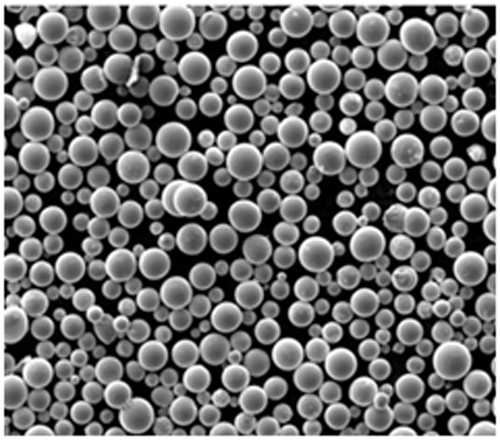
Zusammensetzung des heißisostatischen Pressens (HIP)
Die Zusammensetzung der für HIP verwendeten Materialien hängt von der jeweiligen Anwendung und den gewünschten Eigenschaften des Endprodukts ab. Zu den häufig verwendeten Metallpulvern für HIP gehören Titanlegierungen, Superlegierungen auf Nickelbasis, rostfreie Stähle und Werkzeugstähle. Jeder dieser Werkstoffe bietet einzigartige Eigenschaften, die ihn für unterschiedliche industrielle Anwendungen geeignet machen.
Eigenschaften und Merkmale von Heiß-Isostatisches Pressen (HIP)
Das heißisostatische Pressen bietet zahlreiche Vorteile, darunter verbesserte mechanische Eigenschaften, höhere Dichte und geringere Porosität. Diese Eigenschaften führen zu Bauteilen mit höherer Festigkeit, Ermüdungsbeständigkeit und allgemeiner Haltbarkeit. Nachfolgend finden Sie eine detaillierte Tabelle mit einer Zusammenfassung der Eigenschaften und Merkmale von HIP-Materialien.
| Eigentum | Beschreibung |
|---|---|
| Dichte | HIP reduziert die Porosität erheblich, was zu Komponenten mit höherer Dichte führt |
| Stärke | Das Verfahren verbessert die mechanische Festigkeit des Materials |
| Ermüdungswiderstand | Verbesserte Beständigkeit gegen Ermüdung und zyklische Belastung |
| Zähigkeit | Erhöhte Zähigkeit durch gleichmäßigen Druckaufbau |
| Korrosionsbeständigkeit | Bestimmte für HIP verwendete Legierungen weisen eine ausgezeichnete Korrosionsbeständigkeit auf |
| Biokompatibilität | Materialien wie Ti-6Al-4V und CoCrMo sind biokompatibel und eignen sich daher für medizinische Implantate |
| Wärmeleitfähigkeit | Einige HIP-Materialien, wie AlSi10Mg, bieten eine gute Wärmeleitfähigkeit |
| Verschleißfestigkeit | Legierungen wie CoCrMo und H13-Werkzeugstahl bieten eine hohe Verschleißfestigkeit, die für Werkzeuge und medizinische Anwendungen unerlässlich ist. |
Anwendungen des heißisostatischen Pressens (HIP)
HIP wird in einer Vielzahl von Anwendungen in unterschiedlichen Branchen eingesetzt. Seine Fähigkeit, Bauteile mit hervorragenden mechanischen Eigenschaften herzustellen, macht es zu einem unschätzbaren Verfahren in kritischen Sektoren. In der nachstehenden Tabelle sind einige gängige Anwendungen von HIP aufgeführt.
| Industrie | Anmeldung |
|---|---|
| Luft- und Raumfahrt | Triebwerkskomponenten, Turbinenschaufeln, Strukturteile |
| Automobilindustrie | Motorenteile, Getriebekomponenten, Leichtbaustrukturen |
| Medizinische | Implantate (Hüfte, Knie, Zahn), chirurgische Instrumente |
| Energie | Komponenten von Kernreaktoren, Gasturbinen |
| Werkzeugbau | Druckgießformen, Strangpresswerkzeuge, Schmiedewerkzeuge |
| Öl und Gas | Unterwasserkomponenten, Bohrwerkzeuge |
| Verteidigung | Panzerung, Waffenkomponenten |
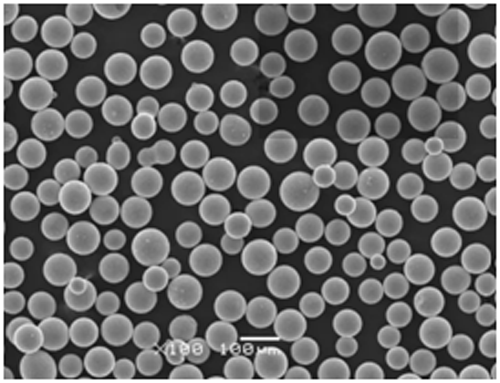


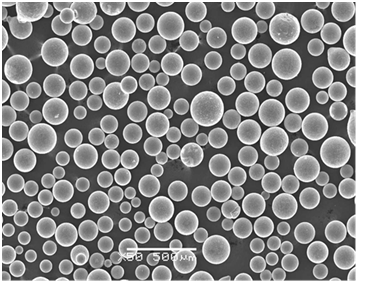
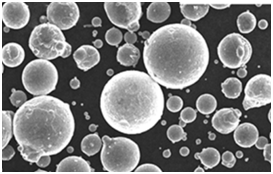

Spezifikationen, Größen, Güteklassen und Normen für HIP
Die Spezifikationen und Normen für HIP-Materialien variieren je nach Branche und Anwendung. Die nachstehende Tabelle gibt einen Überblick über die gängigen Spezifikationen, Größen, Güteklassen und Normen für HIP.
| Material | Spezifikationen | Größen | Klassen | Normen |
|---|---|---|---|---|
| ti-6al-4v | ASTM B348, AMS 4928 | Durchmesser: 10-500 mm | Klasse 5 | ASTM, AMS |
| Inconel 718 | AMS 5662, ASTM B637 | Durchmesser: 6-400 mm | UNS N07718 | ASTM, AMS |
| 17-4 PH Edelstahl | ASTM A564, AMS 5643 | Durchmesser: 8-300 mm | Klasse 630 | ASTM, AMS |
| AlSi10Mg | ISO 3522 | Durchmesser: 5-250 mm | – | ISO |
| CoCrMo | ASTM F75, ISO 5832-12 | Durchmesser: 4-150 mm | – | ASTM, ISO |
| H13 Werkzeugstahl | ASTM A681, DIN 1.2344 | Durchmesser: 10-500 mm | H13 | ASTM, DIN |
| 316L-Edelstahl | ASTM A276, AMS 5648 | Durchmesser: 6-300 mm | 316L | ASTM, AMS |
| Ti-5553 | AMS 4991 | Durchmesser: 8-200 mm | Besoldungsgruppe 5553 | AMS |
| Martensitaushärtender Stahl | AMS 6514 | Durchmesser: 10-300 mm | Klasse 250, 300 | AMS |
| MP35N | ASTM F562, AMS 5844 | Durchmesser: 5-150 mm | – | ASTM, AMS |
Lieferanten und Preisangaben
Wenn Sie HIP für Ihren Produktionsbedarf in Betracht ziehen, ist es wichtig, die Lieferanten und die Preisgestaltung zu kennen. In der nachstehenden Tabelle sind einige namhafte Lieferanten und ungefähre Preise für verschiedene HIP-Materialien aufgeführt.
| Anbieter | Material | Preis (pro kg) |
|---|---|---|
| Tischlertechnik | ti-6al-4v | $150 |
| Besondere Metalle | Inconel 718 | $180 |
| Sandvik Werkstoffe | 17-4 PH Edelstahl | $80 |
| ECKA-Granulat | AlSi10Mg | $50 |
| ATI-Metalle | CoCrMo | $200 |
| Uddeholm | H13 Werkzeugstahl | $70 |
| Outokumpu | 316L-Edelstahl | $60 |
| TIMET | Ti-5553 | $170 |
| ArcelorMittal | Martensitaushärtender Stahl | $160 |
| Fort Wayne Metalle | MP35N | $250 |
Vorteile und Beschränkungen von HIP
Obwohl HIP zahlreiche Vorteile bietet, ist es wichtig, seine Vorteile und Grenzen zu kennen. Die nachstehende Tabelle enthält eine Gegenüberstellung der Vor- und Nachteile von HIP.
| Vorteile | Beschränkungen |
|---|---|
| Reduziert die Porosität und verbessert die Dichte | Hohe Kosten für Ausrüstung und Betrieb |
| Verbessert die mechanischen Eigenschaften | Begrenzt auf bestimmte Materialgrößen |
| Erhöht die Ermüdungs- und Korrosionsbeständigkeit | Lange Bearbeitungszeiten |
| Gleichmäßiger Druckauftrag | Erfordert spezielles Fachwissen |
| Verbessert die Homogenität des Materials | Nicht für alle Materialarten geeignet |
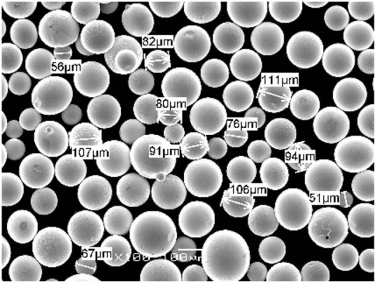
FAQs
| Frage | Antwort |
|---|---|
| Was ist heißisostatisches Pressen (HIP)? | HIP ist ein Herstellungsverfahren, bei dem hoher Druck und hohe Temperaturen auf Materialien angewendet werden, um deren Eigenschaften zu verbessern. |
| Wie verbessert HIP die Materialeigenschaften? | HIP verringert die Porosität, erhöht die Dichte und verbessert die mechanischen Eigenschaften wie Festigkeit und Ermüdungsbeständigkeit. |
| Welche Materialien werden bei HIP üblicherweise verwendet? | Zu den gängigen Materialien gehören Titanlegierungen, Superlegierungen auf Nickelbasis, rostfreie Stähle und Werkzeugstähle. |
| Gibt es irgendwelche Einschränkungen bei der Verwendung von HIP? | Ja, HIP kann teuer sein, hat lange Bearbeitungszeiten und ist auf bestimmte Materialgrößen und -arten beschränkt. |
| Welche Branchen nutzen HIP? | HIP wird in der Luft- und Raumfahrt, im Automobilbau, in der Medizintechnik, im Energiesektor, im Werkzeugbau, in der Öl- und Gasindustrie sowie im Verteidigungssektor eingesetzt. |
| Was sind die Vorteile von HIP? | Zu den Vorteilen gehören eine verbesserte Dichte, Festigkeit, Ermüdungsbeständigkeit und allgemeine Homogenität des Materials. |
| Ist HIP für alle Materialien geeignet? | Nein, HIP ist nicht für alle Materialien geeignet. Es funktioniert am besten bei bestimmten Legierungen und Metallen. |
| Wie wirkt sich das HIP auf die Produktionskosten aus? | HIP kann die Produktionskosten aufgrund der teuren Ausrüstung und der damit verbundenen Betriebskosten erhöhen. |

